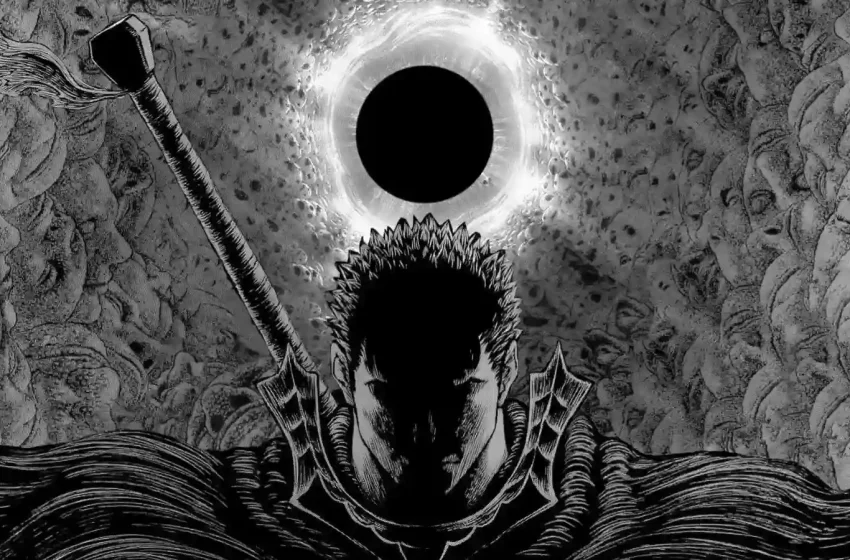
Berserk’s Exploration of PTSD and Trauma
Kentaro Miura’s “Berserk” is a manga series that has garnered widespread acclaim for its intricate storytelling, complex characters, and visceral artwork. Beyond its epic battles and dark fantasy setting, the series delves deeply into the psychological effects of trauma and post-traumatic stress disorder (PTSD). In this article, we will explore how “Berserk” masterfully portrays the psychological scars that haunt its characters and the lasting impact of trauma on their lives.
The Brutality of the World
“Berserk” is set in a harsh and unforgiving world where violence, betrayal, and suffering are constants. The protagonist, Guts, is exposed to brutality from a young age, having been raised as a child soldier in a mercenary band. His early experiences include witnessing the horrors of war, enduring abuse, and surviving in a world devoid of compassion.
Guts’ traumatic experiences lay the foundation for the series’ exploration of PTSD and trauma. His relentless journey through this harsh world becomes a reflection of the lasting effects of his past traumas, and readers are invited to witness the toll it takes on his psyche.
The Eclipse: A Nightmarish Turning Point
One of the most harrowing moments in “Berserk” is the Eclipse, a nightmarish event orchestrated by the God Hand. During the Eclipse, Guts and his comrades are betrayed and subjected to unspeakable horrors. The event culminates in a traumatic transformation for Guts and the loss of many of his companions, including the traumatic assault of his beloved Casca.
The Eclipse serves as a pivotal turning point in the series and is a catalyst for Guts’ PTSD. The trauma inflicted upon him during this event leaves deep emotional and psychological scars that shape his character and drive his quest for vengeance. The visceral and horrifying nature of the Eclipse reflects the series’ commitment to portraying trauma and its consequences with unflinching realism.
Guts’ Inner Struggles
Throughout “Berserk,” Guts grapples with the traumatic events of his past, leading to a complex portrayal of PTSD. His symptoms include vivid and intrusive flashbacks of the Eclipse, nightmares, and severe anxiety. Guts’ journey is marked by hypervigilance, as he is constantly on guard against threats, both physical and psychological.
His intense anger and rage, often directed at his enemies, are symptomatic of the emotional dysregulation commonly seen in individuals with PTSD. Guts’ difficulty in forming close relationships and his tendency to push people away reflect the social and emotional isolation that trauma survivors often experience.
The Beast of Darkness: A Metaphor for Trauma
Within Guts’ psyche, the series introduces a metaphorical representation of his trauma—the “Beast of Darkness.” This inner demon embodies the rage, pain, and brutality that Guts has endured throughout his life. The Beast’s presence highlights the ongoing struggle within Guts’ mind and serves as a visual and thematic representation of his PTSD.
The Beast of Darkness constantly threatens to consume Guts, pushing him to the brink of moral and emotional collapse. It is a metaphorical manifestation of the way in which trauma can become a relentless and haunting presence in the lives of survivors, influencing their thoughts and actions.
Casca’s Trauma and Amnesia
Casca, Guts’ beloved companion, also suffers profound trauma as a result of the Eclipse. Her trauma manifests differently, as she is rendered mute and loses her memory, a condition often referred to as dissociative amnesia. Casca’s inability to speak and her fragmented memories are powerful representations of the psychological toll of trauma.
Her journey to recover from her amnesia and heal from her traumatic experiences parallels Guts’ own struggle. Casca’s character serves as a poignant reminder that trauma affects individuals differently and can result in a range of psychological responses, from emotional numbness to memory disturbances.
The Impact on Supporting Characters
Beyond Guts and Casca, “Berserk” explores the effects of trauma on a range of supporting characters. Farnese, a former noblewoman turned warrior, grapples with her traumatic past and a complex relationship with self-harm as a means of coping. Serpico, her loyal companion, carries his own emotional burdens tied to his traumatic upbringing.
The series does not shy away from portraying the diverse ways in which individuals cope with trauma, including unhealthy coping mechanisms and self-destructive behaviors. These characters’ struggles add depth to the series’ exploration of PTSD and the complexities of trauma recovery.
The Quest for Healing and Redemption
Amid the bleakness and brutality of “Berserk,” there is a recurring theme of healing and redemption. Guts’ determination to protect and care for Casca, despite the overwhelming challenges they face, is a testament to the potential for resilience and growth in the aftermath of trauma. His journey represents the arduous path toward healing and recovery.
The inclusion of characters like Schierke, a young witch with formidable psychic abilities, and Isidro, a spirited young warrior, demonstrates the importance of connection and support in the process of healing. These characters provide Guts and Casca with a sense of belonging and community, highlighting the potential for positive relationships to aid in trauma recovery.
Conclusion
“Berserk’s” exploration of PTSD and trauma is a testament to the series’ depth and complexity. Kentaro Miura’s masterful storytelling and evocative artwork allow readers to empathize with the characters’ struggles and witness the long-lasting effects of trauma. The series’ commitment to portraying the psychological scars of its characters adds a layer of realism and emotional depth that resonates with readers on a profound level.
Ultimately, “Berserk” offers a poignant and powerful portrayal of trauma and the enduring resilience of the human spirit. It serves as a reminder that even in the darkest of circumstances, there is the potential for healing, growth, and redemption, making it a work of tragic beauty that continues to captivate and resonate with audiences worldwide.

